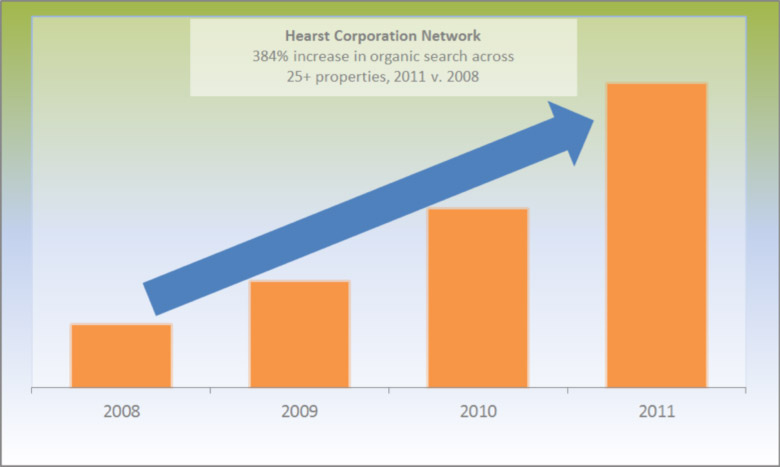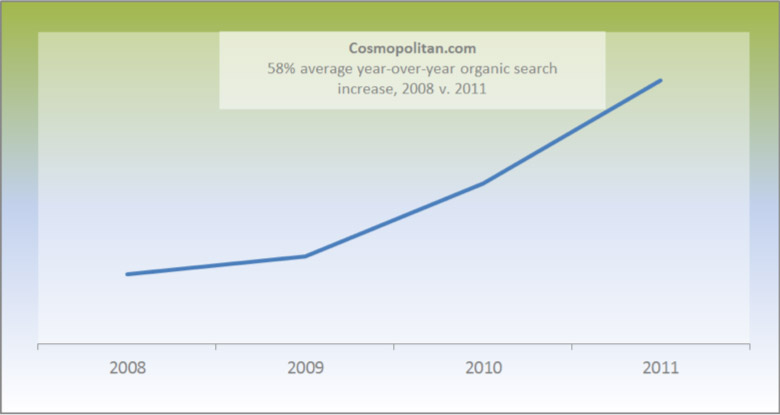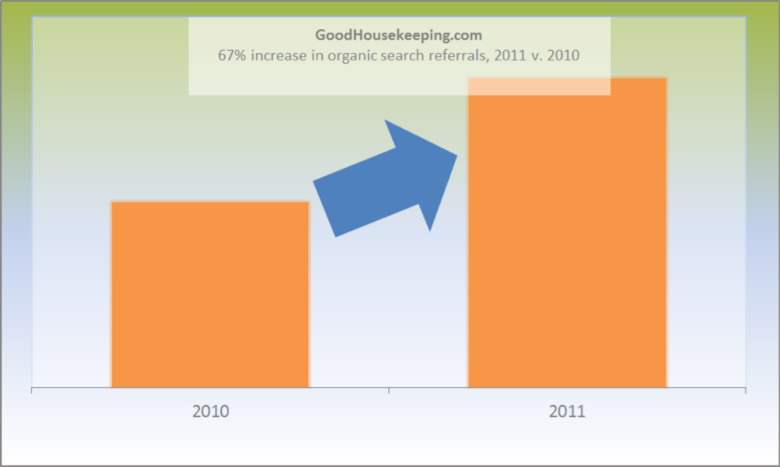Case Study: How SEO Training Builds a Foundation for Success
Objective:
Hearst Digital Media Group needed to educate its technical and editorial teams on SEO and social media best practices in order to maximize the visibility of its content. Training was required for a wide range of employees across 25+ sites including Cosmopolitan, Good Housekeeping, Redbook, Seventeen, Esquire and Popular Mechanics.
Strategy and Tactics:
Coordinating with Hearst’s in-house SEO and social media teams, Define established a training curriculum for both technical and editorial audiences. Ongoing training sessions were scheduled and opened up to all relevant staff. Trainings were repeated periodically to provide reinforcement and account for staff turnover, and over time more advanced topics were introduced.
Through technical trainings, the staff was given a solid understanding of search-friendly site architecture in order to facilitate effective crawling and indexing of the Hearst sites. Best practices were also introduced and reinforced to focus critical attention and mitigate traffic loss during their network-wide migration to a new centralized content management platform. This was important not only to make sure that current properties were properly optimized, but to ensure that SEO and social media implications would be considered in the development of future sections and features.
In the editorial trainings, it was essential to bridge the gap with editors and producers who had natural concerns over how SEO and social media might impact their process. The key was creating the understanding that editorial SEO and social media is not about manipulating copy, stuffing in keywords or simply re-publishing headlines verbatim on Facebook and Twitter. For SEO, it is about helping search engines understand what site content is about, so it can be matched with users looking for that information, and for social media, it is about developing a strategy for engaging users with the publishers’ original content.
Results:
Equipping technical teams with a better understanding of SEO and social media allowed them to better prioritize and execute the recommendations in Define’s site audits, resulting in significant improvements in site architecture and template design. In addition, SEO and social media was incorporated into the development cycle, ensuring that new site features were search and social-media friendly right from the start.
Concurrently, search and social media-friendly best practices were built into the daily editorial workflow. Hearst’s ability to clearly label its content, leverage internal linking, factor in searcher behavior and develop a strategy for social engagement while planning site features resulted in much greater search and social media visibility over time.
Hearst’s success can be seen in the following results:



Tags:
Related Posts
About the Author
This site uses Akismet to reduce spam. Learn how your comment data is processed.
Recent posts
-

MozCon Presentation – Dark Search, Mobile and Social – Run Rabbit Run!
September 29, 2017 at 1:33 PM
-

MozCon Presentation – Keep the Focus on the Doughnuts
September 29, 2017 at 11:54 AM
-

Download Search Console URL Parameters Painlessly with This Handy Bookmarklet
January 5, 2016 at 6:41 AM
-

Mobilegeddon or: How I Learned to Stop Worrying and Love Our New Mobile World
July 27, 2015 at 5:53 AM

Leave a reply